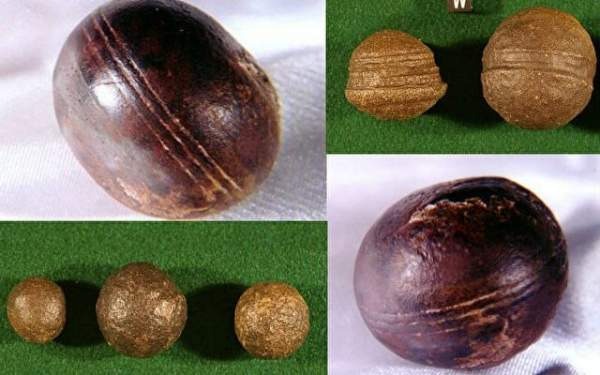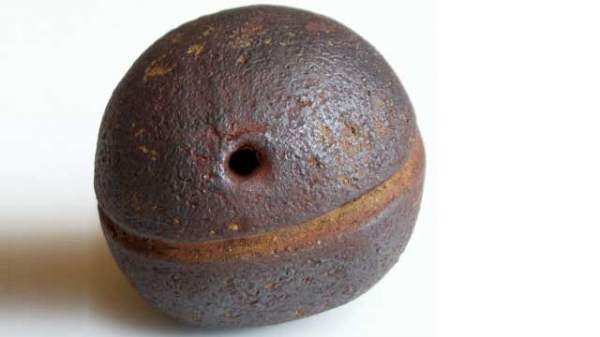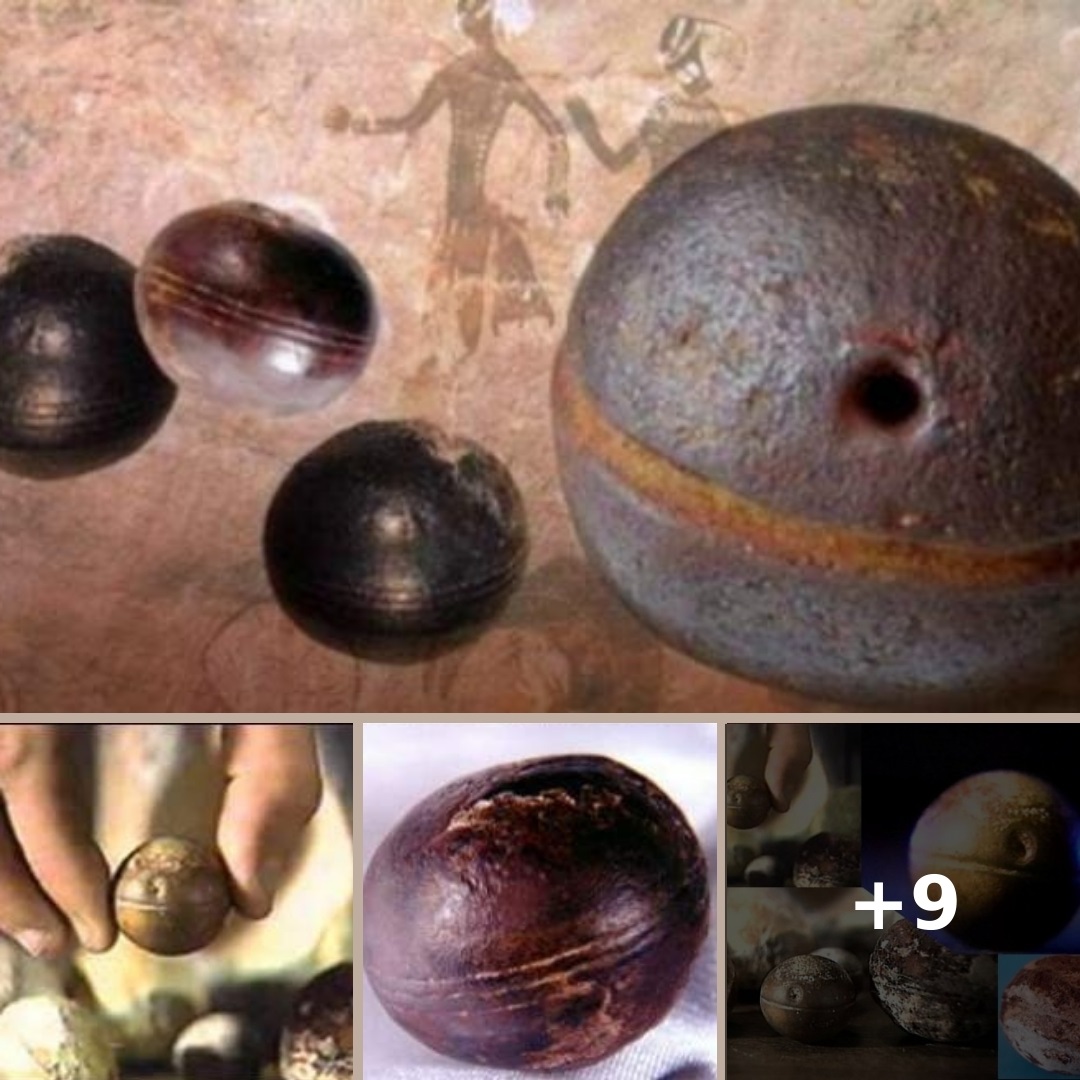Upper left, lower right: these artifacts known as Klerksdorp spheres were found in the mineral pyrophyllite (pirofilite) near the city of Ottosdal in South Africa. (Robert Huggett) upper right, lower left: These artifacts are known as Moqui marbles and were found in the Navajo sandstone in Southern Utah.
These ultra-solid little spheres- manufactured with great precision, baffled scientists. They are found in minerals dating back billions of years in the North of South Africa.
Michael Cremo, author of the book “Forbidden Archeology,” considers the Klerksdorp spheres to be evidence of “advanced” life on Earth long before our civilization.

For him and many other researchers, these small spheres, as well as many other mysterious artifacts, offer a whole new perspective on history.
Michael Cremo traveled the world in search of artifacts, and summarized the conclusions in his book , Forbidden Archeology. The hidden history of mankind”.
While researching these small spheres in 1984, he contacted Roelf Marx, the former curator of the Klerksdorp museum in South Africa. Marx found them very strange and mysterious, he described the small spheres as very hard, but the inside was spongy, After removing the thin shell, this “sponge stuffing” could dissolve.

Marx wrote to Cremo: “There are no scientific reports. These small spheres are found in the mineral pyrophyllite mined near Ottosdal.”
Pyrophyllite has a hardness of 1 to 2 on the Mohs scale. This means it can be scratched with a fingernail. The small spheres found are very hard.
They are made from an alloy of steel and nickel and steel cannot scratch them. The hardness of steel is graded on the Mohs scale from 6 to 8. Only the minerals sapphire (Moh hardness: 9) and diamond (Mohs hardness: 10) are the hardest.

Did these spheres form naturally?
It is thought that these small spheres may be produced by the formation of nodules. Mineral nodules are often irregular in structure. Other relatively round mineral nodules are also formed in nature. but they are different from the extremely precisely shaped Klerksdorp balls.
Klerksdorp spheres are famous for their particularly impressive ridges that run parallel around the circle with extreme precision, which is why they cannot be naturally formed, but rather a manufactured product. manufactured.

In 2002, the Klerksdorp Museum published a letter from John Hund in Pietersburg, South Africa. Hund claims that one of these small spheres was tested at the “California School of Technology” in NASA’s Jet Propulsion Laboratory (JPL).
Current measuring devices have not detected any anomalies, they are perfectly balanced: “Even at the hundredth of a thousandth degree – absolute perfection”.
For this accuracy, they need to be manufactured under weightless conditions. However, this content of the letter has not been confirmed, according to Paul V.

Heirich, the letter was subsequently removed. The spheres were studied by Henry himself, without such precision.
Moqui balls in Utah
Similar small spheres are found in Utah, they are 2 million years old and are called Moqui balls or Moqui balls. According to legend, the ancestors of the Hopi Indians played with them.

And they leave these little spheres to their descendants, as witnesses to their expertise.
These small spheres have an outer shell of iron oxide and an interior of sand. The Klerksdorp spheres, on the other hand, are made of different minerals such as hematite, goethite and hydrated iron oxide.
So there are constantly discoveries about civilizations that seem to have no. New human discoveries seem to constantly open up horizons of the beautiful past that were previously unthinkable, unbelievable, but now force people to reflect to see themselves as so small. Before the vast and vast universe, human capacity is still too small and limited. Please respect nature. Who we are and what we can actually do, in fact remains a great unknown of humanity.

